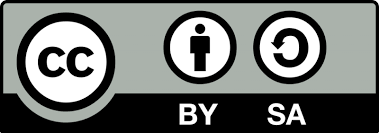School curriculum and educational equity
DOI:
https://doi.org/10.23824/ase.v0i43.970Downloads
Abstract
Equity, as a principle of the education system, affects its main areas, such as the curriculum. Hence, the opportunity to link curriculum and equity, in connection with the participation in the 17th State Congress on Education Inspection of the Association of Education Inspectors (ADIDE), "Equity, Equality, and Educational Inspection," held in Córdoba in November 2024. Four aspects are, therefore, of interest: educational equity in the different theories of curriculum; prescribed curriculum design models and the equitable adaptation of teaching; equity and basic education in the education system; as well as the influence of curriculum presentations, teachers' expectations of students, and the paradigm of social justice. These issues are significant in order to provide some ideas and reflections on their contribution to equity. This, as a general conclusion, must seek equal educational opportunities for academic success, completely opposed to the inequitable reproduction of personal and social inequalities of origin, achieving equal opportunities for access to education, but without adequate educational responses, mainly in compulsory education.
References
Abiétar, M. y Navas A. A. (2017). El sentido de la escolaridad obligatoria como transición o como fin. Profesorado. Revista de Currículum y Formación del Profesorado, 21(4), 75-94.
Apple, M. (1986), Ideología y currículo. Akal. (Trabajo original publicado en 1979).
Belavi, G. y Murillo, F. J. (2020). Democracia y justicia social en las escuelas: dimensiones para pensar y mejorar la práctica educativa. Revista Iberoamericana sobre Calidad, Eficacia y Cambio en Educación, 18(3), 5-28. https://doi.org/10.15366/reice2020.18.3.001
Bloom, B.S. (Ed.). (1956). Taxonomy of educational objectives. The classification of educational goals. Handbook I, The cognitive domain. David McKay Company, Inc.
Bloom, B. S., Krathwohl, D. R. y Masia, B. B. (1964). Taxonomy of educational objectives. The classification of educational goals. Handbook II, Affective domain. David McKay Company Inc.
Bobbitt, F. (1918). The curriculum. Houghton Mifflin.
Bobbitt, F. (1924). How to make a curriculum. Houghton Mifflin.
Eisner, E. W. (1979). The educational imagination: On the design and evaluation of school programs. Macmillan.
Clark, Ch. y Yinger, R. J. (1980). The hidden world of teaching: implications on teacher planning. East Lansing, Michigan State University.
Coll, C. (1991). Psicología y currículum. Paidós.
Coll, E. (2006). Lo básico en la educación básica. Reflexiones en torno a la revisión y actualización del currículo de la educación básica. Revista Electrónica de Investigación Educativa, 8(1). http://redie.uabc.mx/vol8no1/contenido-coll.html
Dewey, J. (1995). Democracia y educación. Una introducción a la filosofía de la educación. Morata. (Trabajo original publicado en 1916).
Fraser, N. (2012). Escalas de justicia. Herder Editorial. (Trabajo original publicado en 2008).
Frías del Val, A. S. (2007). El currículo escolar y la descentralización educativa en España. Revista de Educación, (343), 199-221.
Gimeno Sacristán, J. (2000). La educación obligatoria: su sentido educativo y social. Morata.
Jackson, Ph. W. (1991). La vida en las aulas. Morata. (Trabajo original publicado en 1968).
Kemmis, S. (1988). El currículum: más allá de la teoría de la reproducción. Morata. (Trabajo original publicado en 1986).
Montero Alcaide, A. (2021). Currículo y autonomía pedagógica. Enseñanzas mínimas, comunes y currículo básico. REICE. Revista Iberoamericana sobre Calidad, Eficacia y Cambio en Educación, 19(2), 23-36. https://doi.org/10.15366/reice2021.19.2.002
Montero Alcaide, A. (2022). La Alta Inspección de Educación en el debate legislativo. Sentido y necesidad de configuración. Avances En Supervisión Educativa, (37). https://doi.org/10.23824/ase.v0i37.756
Penalva, J. (2007). Análisis crítico de los aspectos teóricos del currículum flexible y abierto. Consecuencias educativas. Profesorado. Revisa de Currículum y Formación del Profesorado, 11(3), 1-14.
Reimer, E. (1973). La escuela ha muerto. Alternativas en materia de educación. Barral Editores. (Trabajo original publicado en 1970).
Rosenthal, R., & Jacobson, L. (1968). Pygmalion in the classroom. The urban review, 3(1), 16-20.
Schön, D. A. (1983). The reflexive practitioner. How professional think in action. Temple Smith.
Stenhouse, L. (1987). Investigación y desarrollo del currículo. Morata. (Trabajo original publicado en 1981).
Taba, H. (1974). Elaboración del currículo. Troquel. (Trabajo original publicado en 1962).
Tyler, R. W. (1973). Principios básicos del currículum. (Trabajo original publicado en 1949).
Wheeler, D. K. (1976). El desarrollo del currículum escolar. Santillana. (Trabajo original publicado en 1967).
How to Cite
Issue
Section
Published
Keywords:
Currículo escolar, equidad educativa, teorías sobre el currículo, modelos de diseño del currículo, educación básica, presentaciones del currículo, expectativas docentes, justicia socialLicense
Copyright (c) 2025 Antonio Montero Alcaide

This work is licensed under a Creative Commons Attribution-ShareAlike 4.0 International License.

Attribution Share-Alike CC BY-SA
Those authors who have publications with this magazine, accept the following terms:
A) The authors will retain their copyrights, which will be simultaneously subject to the Creative Commons Attribution License that allows others to re-mix, modify and develop on your work even for commercial purposes, provided they credit you And to license their new works under the same terms.
B) The authors will retain the rights of exploitation of the intellectual property of this work, and especially the rights of reproduction, distribution, transformation in any of its modalities and public communication of said work, which will be simultaneously subject to the License Of recognition of Creative Commons that allows others to re-mix, modify and develop on your work even for commercial purposes, provided they credit you and license your new works under the same terms.
Creative Commons Attribution-ShareAlike 4.0 International Public License

